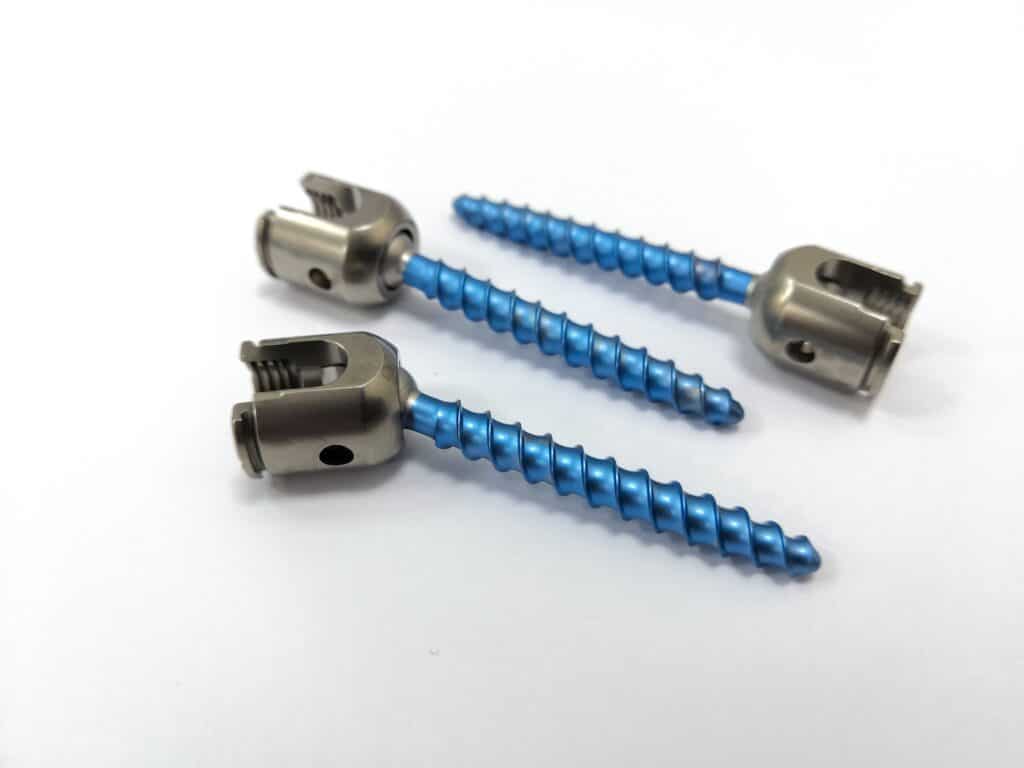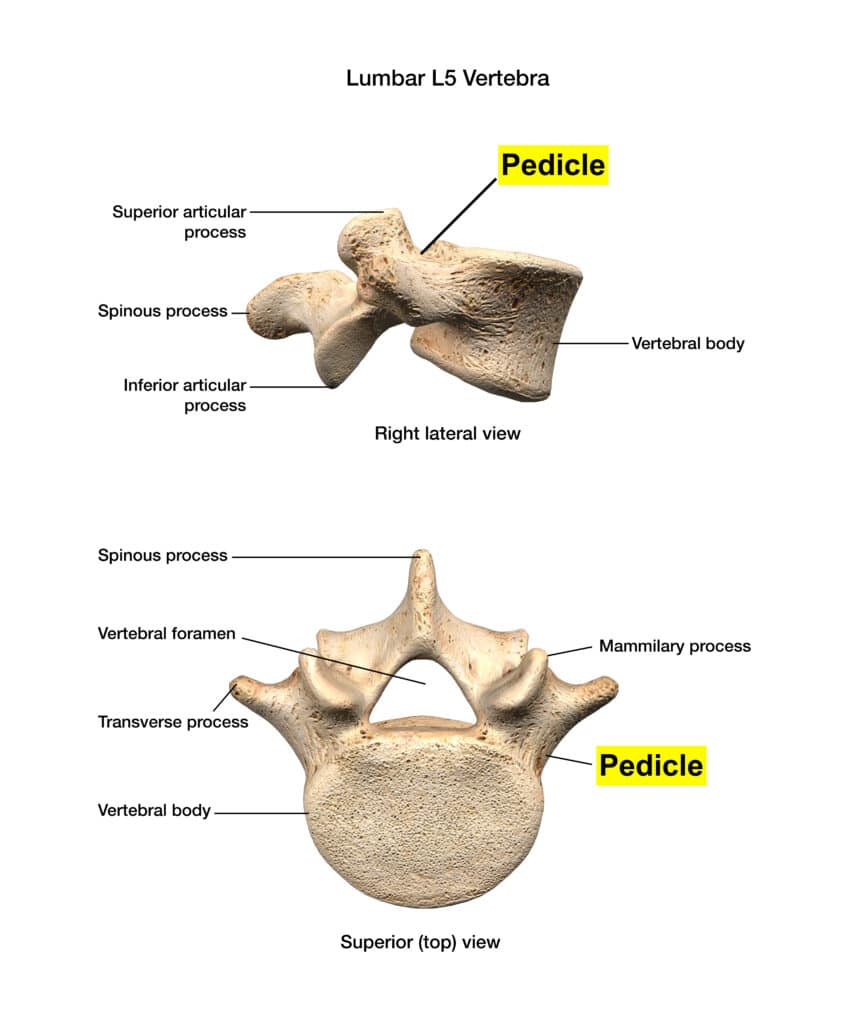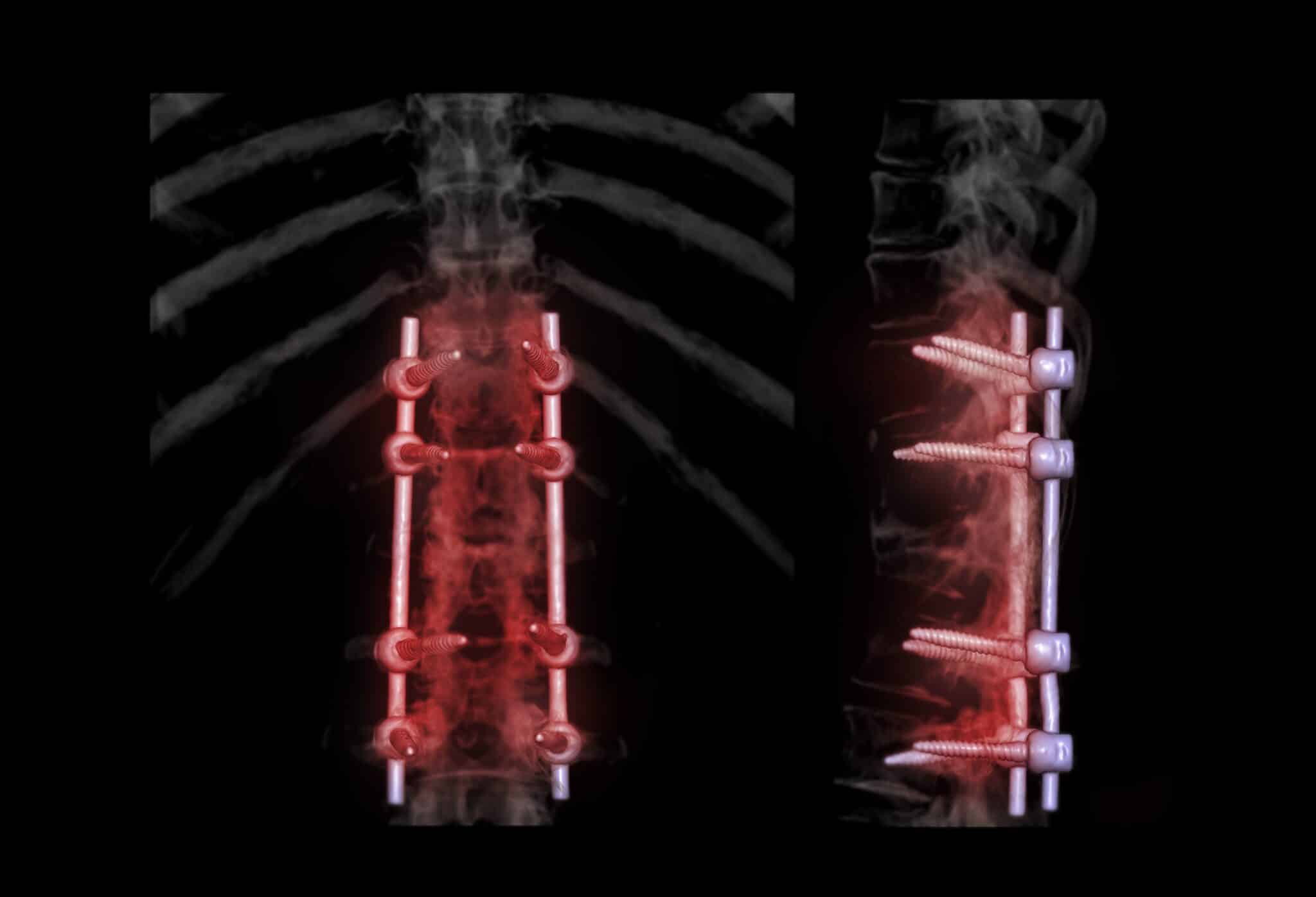What are Pedicle Screws?
Pedicle screws are specialized screws used in spinal fusion surgery to stabilize and immobilize the spine. They are an integral part of the instrumentation used to correct spinal deformities, treat spinal fractures, and stabilize the spine after a surgical procedure.
They work by providing a secure anchor within the vertebral bones, allowing for the attachment of other hardware like rods and plates. This hardware is used to immobilize and fuse the spine in the treatment of various spinal conditions.

Anatomy of the Spine
Before diving into pedicle screws, it’s important to understand the basic anatomy of the spine. The spine is composed of a series of individual bones called vertebrae. Each vertebra has several distinct parts, including the vertebral body (front portion), lamina (arched portion at the back), and two pedicles (short, bony projections that connect the vertebral body to the lamina). It is through this pedicle that the screw is inserted.

What Are Pedicle Screws Made of?
Pedicle screws are typically made of biocompatible materials, most commonly either titanium or stainless steel. These materials are chosen for their strength, durability, and ability to integrate well with the human body without causing adverse reactions or complications
How is the Pedicle Screw Used in a Fusion Surgery?
Pedicle screws are a critically important part of fusion surgery. Let’s take a look at the steps of a fusion surgery and the role pedicle screws play.
- Fluoroscopy or Imaging:
- Intraoperative imaging, often using fluoroscopy (real-time X-ray guidance), is employed to provide the surgeon with a clear view of the spine and ensure accurate placement of the screws.
- Screw Insertion:
- Using specialized instruments, the surgeon carefully drills a pilot hole through the pedicle of the vertebra. This hole is precisely positioned to allow for the safe placement of the screw.
- The pedicle screw is then inserted into the pilot hole. It’s designed with threads that engage with the bone, providing a secure hold.
- Stabilization:
- Once the pedicle screw is in place, it acts as an anchor within the vertebral bone. It prevents motion between the adjacent vertebrae.
- Rod Connection:
- After all necessary screws are inserted, they are connected with rods. These rods are aligned parallel to the spine and attached to the screws. This forms a rigid construct, which stabilizes and supports the spine.
- Bone Grafting:
- In many cases, bone graft material is placed around the vertebrae. This serves two purposes: it promotes bone fusion, and it helps fill any gaps or voids created during surgery.
- Fusion Process:
- Over time, the bone graft material stimulates the growth of new bone. This new bone gradually fuses the adjacent vertebrae together, creating a solid, stable structure.
Potential Complications
While pedicle screws are generally considered safe and effective, like any surgical procedure, there are potential complications that can arise. Some specific issues that may affect pedicle screws include:
- Loosening or Breakage:
- In rare cases, pedicle screws may loosen or break over time. This can lead to instability and may necessitate additional surgery to replace or reposition the hardware.
- Hardware Migration:
- In some cases, pedicle screws may shift or migrate from their original position. This can lead to pain and instability and may require additional surgery to reposition or replace the hardware.
Conclusion
Pedicle screws are specialized screws used in spinal fusion surgery to stabilize and immobilize the spine, integral in correcting deformities, treating fractures, and post-surgical stabilization. They anchor securely within vertebral bones, allowing for attachment of hardware like rods and plates to immobilize and fuse the spine. Typically made of biocompatible materials like titanium or stainless steel, they are chosen for their strength and compatibility with the body. Complications, though rare, can include loosening, breakage, or migration of screws, necessitating additional intervention. Overall, pedicle screws are crucial in ensuring successful spinal fusion procedures.
